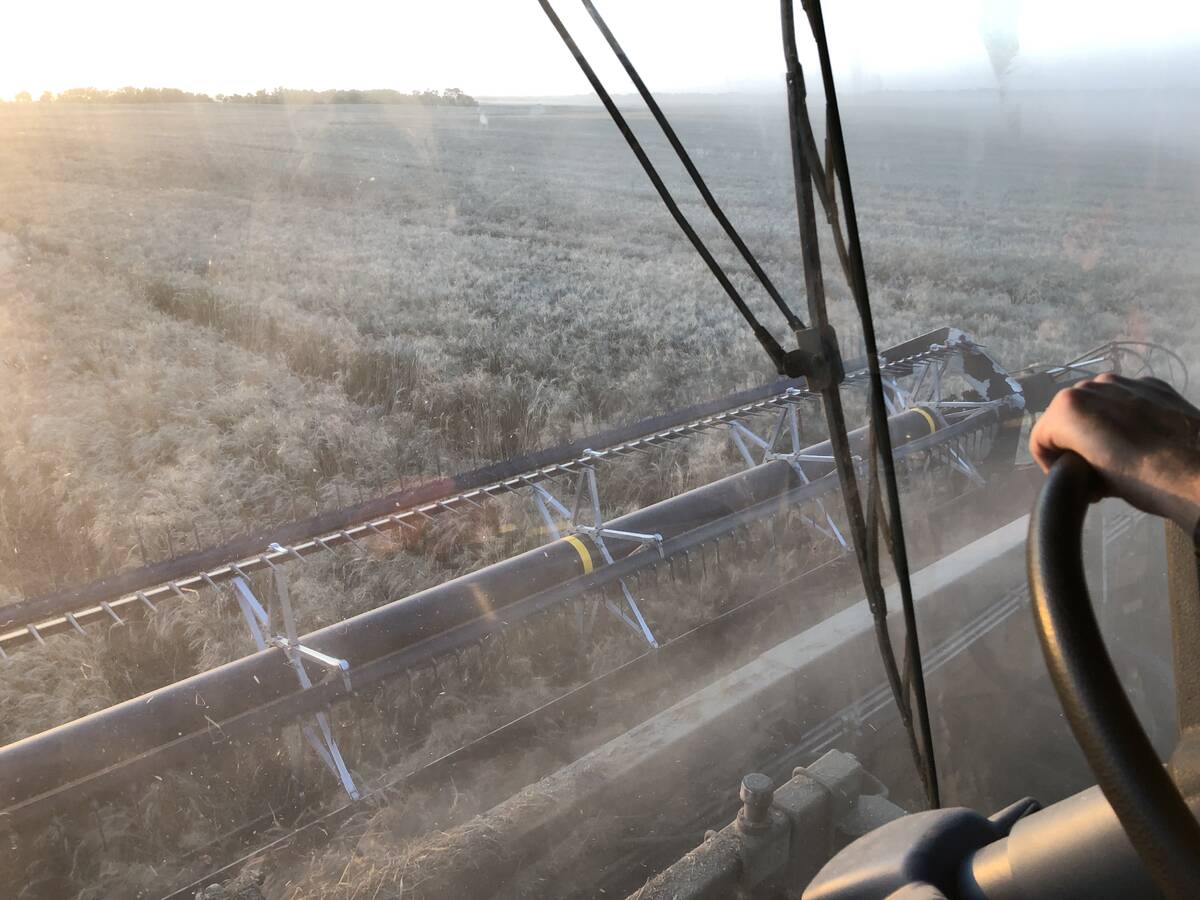Pheromone traps exist for Bertha armyworms and diamondback moths. Now, just in time for the new growing season, there is a pheromone trap for monitoring orange wheat blossom midge.
“Pheromones are one method by which insects communicate. They are chemicals that may attract, repel or alert other insects of the same species,” said Owen Olfert, an entomologist with Agriculture Canada in Saskatoon.
“Pheromones are very specific to each insect species and each pheromone is very specific in its action and the reaction it elicits. The sex pheromone emitted by the female wheat midge and received by the male wheat midge, for example, is designed to attract the male at mating time. If you watch a female wheat midge at mating time – the orange wheat blossom midge is very small, about half the size of a mosquito – you can see the females raise their abdomen to release the pheromone.”
Read Also

Mail strike disrupts grain sample delivery
The Canadian Grain Commission has asked farmers to consider delivering harvest samples directly to CGC offices, services centres or approved drop offs as Canada Post strike delays mail.
About five years ago, Gerhard Gries, a pheromone expert who teaches chemical ecology at Simon Fraser University in Burnaby, B.C., and who had worked with other midge species, asked Olfert for wheat midge cocoons to raise females for further study of midge pheromones.
“This was the beginning of a long process in which Gries and graduate student Lucian Mirciou hatched the females, detected a chemical release, and identified it as pheromone, which is not an easy task because the amount of pheromone is very small,” Olfert said.
“The challenge was then to reproduce this pheromone for commercial purposes. It was a collaborative process, with Gries and Mirciou synthesizing the chemical in bulk and sending it here for testing over several summers. The idea was to attract wheat midge males for counting, so we also had to find the best trap for that purpose.”
He said the final product was a slow-release lure and a green, triangular Delta trap that looked like a little cardboard birdhouse with openings in each end.
“The lure is in the middle and the bottom is sticky. Determining the right colour and shape was important, as certain colours and shapes attract certain insects, and we only want to trap the orange blossom wheat midge.”
Phero Tech Inc., a British Columbia company that specializes in marketing pheromone traps, was granted world rights to the patented wheat midge monitoring system. The kit it now sells includes a green Delta trap with a nail and plastic washer to fix the trap on a stake at canopy level, a white sticky plastic insert with a grid for ease in counting the captured midges, and a Phero Tech flexlure for controlled release of the sex pheromone.
Olfert thinks the monitoring kit has two uses:
- The wheat midge population has dropped in recent years because of dry conditions, but the area over which the insect is distributed is still expanding. The trap could be used as an early warning device in places such as southwestern Saskatchewan and into Alberta where it is steadily moving westward.
- It can also determine the economic threshold of wheat midge. Until now, the only way producers could monitor their fields was by travelling to their fields at dusk and counting the number of midge on the wheat heads.
“Now, producers can monitor their fields for wheat midge by putting out a trap in the field when the crop is susceptible to wheat midge at flowering,” he said.
“After one or two evenings, they open the cardboard container and count the midge stuck to the interior surface. Ten males is the tentative economic threshold; 10 males represent a population size that makes the difference between undamaged No. 1 grade and damaged No. 2 grade wheat.
“Since this is the first season of use, I expect this economic threshold may be modified as we gain experience. Although the dark brown soil zone and aspen parkland have the wheat midge, I don’t expect any major problems this year.
“If producers had midge last year, however, I’d suggest they obtain some traps in order to get experience for when they really do need them. Feedback from producers on the utility of the traps is going to be very important.”
The orange wheat blossom midge monitoring kit is available from Phero Tech Inc. at 800-665-0076. It costs $7.50 plus a courier charge.
















